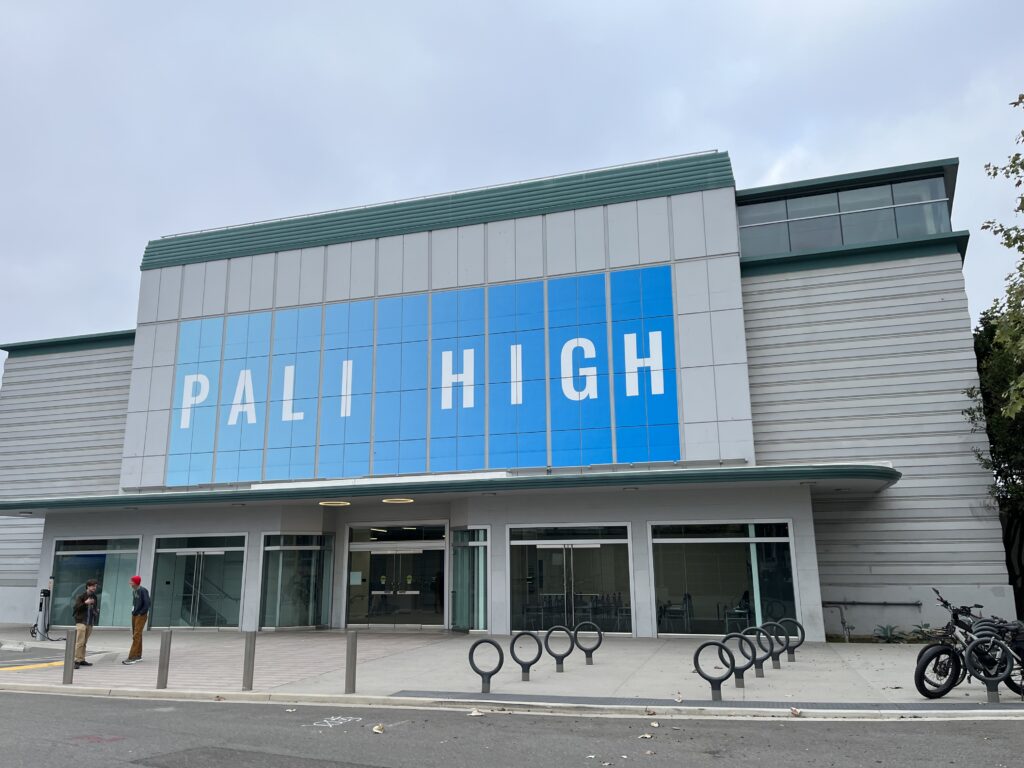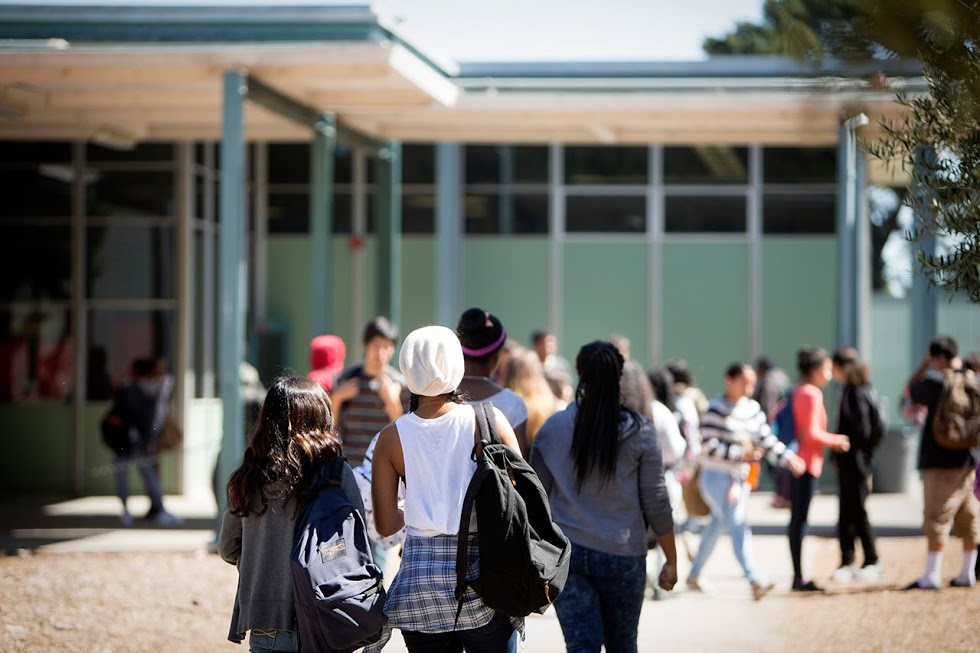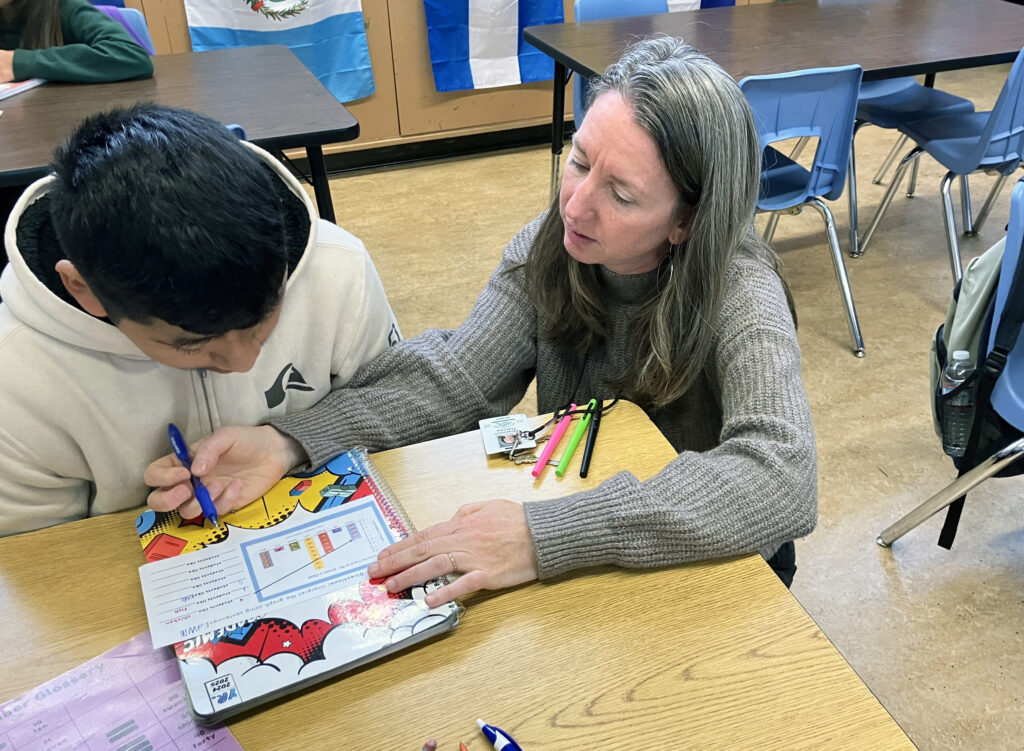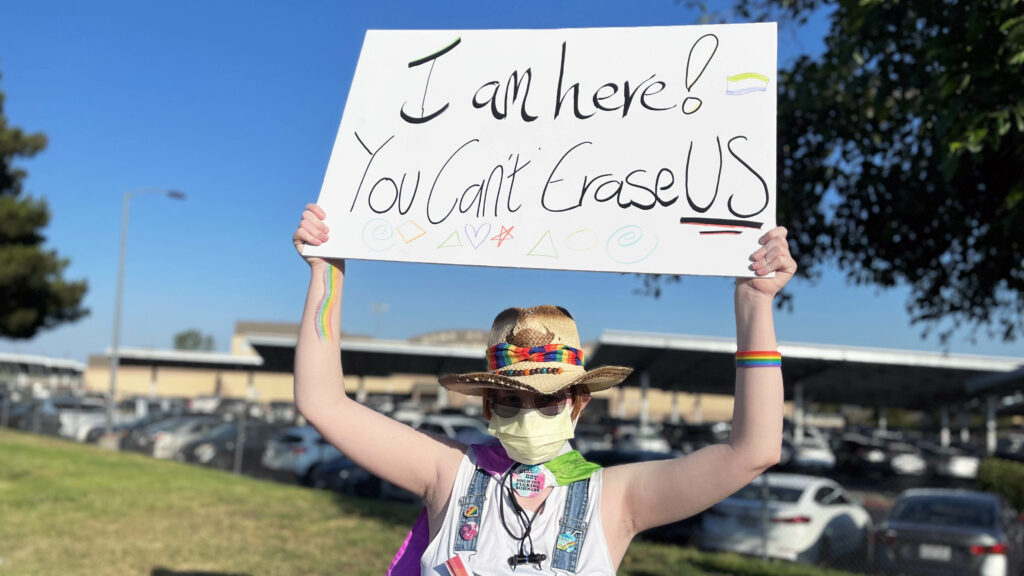
Credit: Alison Yin / EdSource
KEY TAKEAWAYS
- The UC course criteria would promote the Liberated Ethnic Studies perspective.
- It would likely become the default ethnic studies course in K-12 districts.
- It would contradict the state’s own voluntary, open-ended model curriculum.
School districts are looking to the May revision of the state budget to learn if Gov. Gavin Newsom will press ahead with a mandate to offer a high school ethnic studies course whose implementation is contingent on state funding. That will be unlikely.
Brooks Allen, executive director of the State Board of Education and a Newsom adviser, confirmed Tuesday that, given current revenue forecasts, Newsom will not be funding the mandate. He conveyed that message to a representative of the UC Academic Senate, he said.
On Wednesday, however, representatives of the University of California faculty will decide whether to recommend that U.C. regents not wait for state funding and instead independently mandate a course. They’ll vote on a proposal (see pages 39 to 57) to require an ethnic studies course, incorporating criteria and content that Newsom and the State Board of Education have already rejected as politically extreme, for admissions to UC campuses.
Opponents said that adopting the proposal, which had been nearly five years in the making, would be unwise and probably illegal.
“Requiring such a course would entangle the university in the sorts of political and ideological disputes over ethnic studies course content that are currently roiling school districts across the state and the nation,” wrote Richard Sander, a law professor at UCLA, and Matt Malkan, an astronomy professor at UCLA, in a letter to the UC Faculty Assembly of the Senate, the body that will take up the issue on Wednesday. An earlier version was signed by 440 members of the UC faculty.
Sander and Malkan also said that the proposal “would effectively force hundreds of schools to invest large sums in creating the mandated curriculum and finding or hiring teachers to teach it” – a step that “would probably ultimately be found to be illegal” if UC acted unilaterally.
If the Assembly passes the proposal, it would be forwarded to UC President Michael Drake and then to the UC Regents this summer for final approval.
Ethnic studies faculty at UC campuses pushed for including ethnic studies among the 15 courses required for admissions, known as “A-G.” It would be satisfied through an English, history or an elective course taught through an ethnic studies lens, as UC defines it. Ethnic studies would become “H”, a new area of concentration.
When adopting legislation in 2016 authorizing the creation of a voluntary, model ethnic studies curriculum, the Legislature was vague about what it intended for an ethnic studies course. It said the objective was to prepare pupils to be “global citizens with an appreciation for the contributions of multiple cultures”; school districts could “adapt courses to reflect the pupil demographics in their communities.”
UC’s proposed criteria for high schools would take a more directive and controversial approach, reflecting the content of many college-level courses.
“Ethnic studies is aimed at producing critical knowledge about power, inequality, and inequity as well as the efforts of marginalized and oppressed racialized peoples to challenge systemic violence and the institutional structures that perpetuate racial injustice,” wrote the co-lead writers, UC Riverside teaching professor Wallace Cleaves and UC Santa Cruz critical race and ethnic studies and literature professor Christine Hong, in a preface explaining the intent of the criteria.
Hong and Cleaves say it is appropriate to set rigorous course criteria for students entering UC because ethnic studies faculty created the foundational theories and instructional strategies for the academic discipline, and the State Board and local district teachers lack their expertise.
But the effect of adopting their course for entry into UC would be an end-run around the state board’s open-ended guidance. It would also deviate from many legislators’ vision of ethnic studies as the study of the cultures and achievements of minority groups, as well as their past and ongoing struggles with racism and discrimination.
The UC criteria would become the standard version that high schools would offer. In turn, UC and CSU ethnic studies faculty would become the go-to private consultants for creating districts’ curricula and training teachers.
Emergence of Liberated Ethnic Studies
UC and CSU ethnic studies faculty were primary writers of the first draft of the state’s model curriculum in 2019, but President Linda Darling-Hammond and other members of the State Board rejected it as biased, and the board hired new writers. The California Legislative Jewish Caucus objected to its characterization of Israel as an oppressive white colonial state and the call for a boycott of companies doing business with Israel.
“A model curriculum should be accurate, free of bias, appropriate for all learners in our diverse state and align with Governor Newsom’s vision of a California for all,” Darling-Hammond’s statement said.
The writers of the initial draft disavowed the final, revised model curriculum that the State Board passed in 2021. They then formed the Liberated Ethnic Studies Model Curriculum Consortium and have encouraged school districts to adopt the original draft as the true alternative. More than two dozen districts have. Both Hong and Cleaves are affiliated with the consortium.
Having gone through five revisions, the final proposal before the Assembly (pages 10 to 18) is a toned-down version, but its purpose and guidelines for developing skills are clear. For example, toward the goal of “Applying critical analysis,” it reads, “Study histories of imperialism, dehumanization, and genocide to expose their continuity to present-day laws, ideologies, knowledge systems, dominant cultures, institutions, and structures that perpetuate racial violence, white supremacy, and other forms of oppression.”
Sander said, “It’s still very clearly a liberated course by which I mean it’s very ideological. It has a particular point of view on various controversial issues.”
Under Assembly Bill 1010, the 2021 state law, high schools would have to offer a one-semester ethnic studies course starting in fall 2025 and students would have to take it for a high school diploma starting in 2029-30. Legislators explicitly referenced the rejected first draft in the law. “It is the intent of the Legislature that (districts) not use the portions of the draft model curriculum that were not adopted … due to concerns related to bias, bigotry, and discrimination,” it reads.
Since then, California Attorney General Rob Bonta and the Newsom administration have reminded school districts to follow the law’s requirements for “inclusivity, sensitivity, and accuracy.”
“We have been advised, however, that some vendors are offering materials that may not meet the requirements of AB 101,” Brooks Allen, executive director of the State Board of Education and an education adviser to Newsom, wrote in a memo to districts in 2023.
The “liberated” version has prompted several lawsuits (see here, here and here) by Jewish families and supportive law firms charging that its one-sided perspective fosters discrimination.
A “target” for President Trump?
The vote Wednesday coincides with fraught relations with the Trump administration. The president has threatened to withhold billions of dollars in federal funding from school districts and California universities that fail to curb antisemitism and teach undefined “woke” ideology on race, including critical race theory.
“Passing the course criteria now would be like putting a target on our back,” Sander said in an interview, and undermine the university’s best defense against Trump’s effort to dictate who to hire and what ideas can be taught.
“It is fundamentally wrong, and inconsistent with the very spirit of a university, to mandate courses that are framed by an ideology – whether that ideology comes from the left or from the right,” he said.























